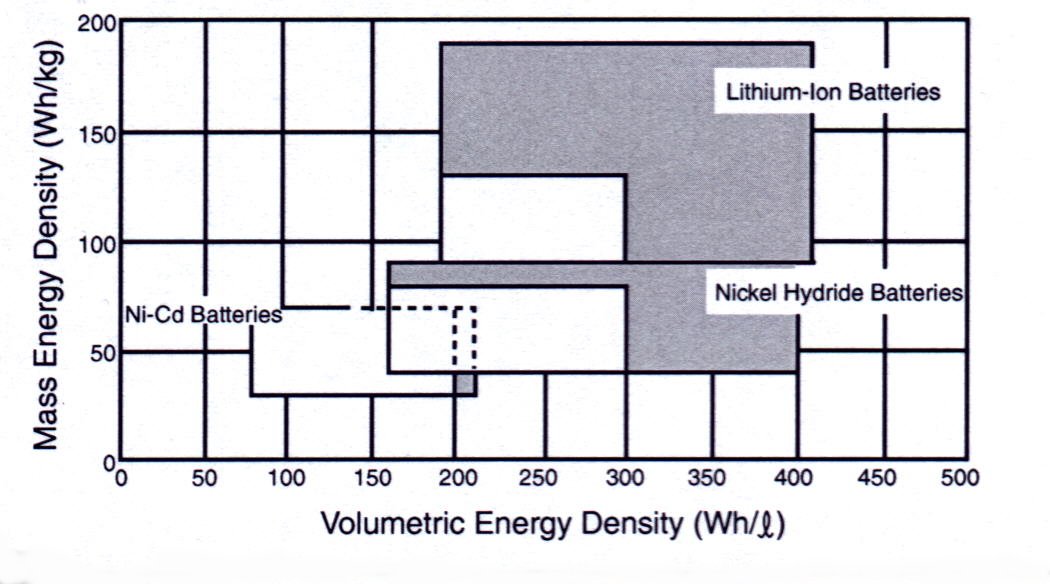| Power Supply Battery choice was mainly influenced by the gravimetric energy density available : the lighter the battery for a given capacity the better. It was decided to use a rechargeable (secondary) technology, because the amount of experimental run time would incur massive costs if a non-rechargeable (primary) battery technology were used. Three types of rechargeable battery were considered: Nickel Cadmium (Ni-Cad), Nickel Metal Hydride (Ni-MiH) and Lithium Ion (Li-Ion). Ni-Cad was the first of the rechargeable technologies and is still used to a wide extent today, mainly for high current drain applications such as power tools. Ni-Cads are relatively inexpensive but have half the capacity of Ni-MiH or Li-Ion, typically 300mAh for a AAA battery. The terminal voltage of NiCad and Ni-MiH is 1.2v compared to the 3.6v of Li-Ion.
|

|
|
Battery Technology Comparison, Panasonic Corporation
|

|
|
The use of this new battery gives a huge increase in the operational time of the blimp (from 10 minutes using two Alkaline (famous make) batteries to two and a half hours). There is one small drawback with the new batteries in that the payload of the blimp has been pushed very close to the limit, with only a further 8g of payload that can be added. This has several implications: ·Any further sensors to be added will require an increase in the envelope
size; |